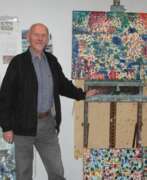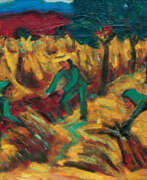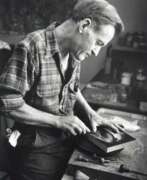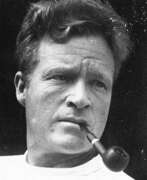Mountain landscape Abstract Expressionism


Herbert Brandl is one of the most famous Austrian expressionist artists. He achieved success through his large-format works.
Landscape as a theme was always dominant in his work, where pictorial abstraction and subjectivity alternate. Since the beginning of the new millennium, Brandl's passion for the monumentality of mountain landscapes has become increasingly evident. Using various formats and techniques, the artist has reinterpreted the theme of mountains, playing with expressive gestures, abstract colour spaces and massive forms.


Zacharias Heinesen is a Faroese painter. He is the son of the writer and artist William Heinesen.
His works include oil paintings, watercolour paintings, drawings, woodcuts, lithographs and paper collages.
His paintings were featured on a series of stamps in June 2001.


Walter Helbig is a German and Swiss painter, graphic designer and woodcarver. He works in Dresden on church paintings. Helbig participated in the founding and first exhibition of the "Neue Secession" in Berlin in 1910. Helbig took part in the first Modern Bund exhibition in 1911 in Lucerne and in the second, larger one, at the Kunsthaus in Zurich. In 1914, some painters from the vanished “Modern Bund”, including Helbig, took part in the first Dada exhibition at the Galerie Coray in Zurich. Helbig is also represented in the third Dada exhibition and contributes to the magazine Der Zeltweg 8 but does not participate in the activities of the Dadaists. In 1919, he was one of the signatories of the “manifesto of radical artists” 9 in Zurich, and joined the “November group” in Berlin. Helbig lived in Zurich from 1916 to 1924 and in 1916 became a member of the GSMBA (Society of Swiss Painters, Sculptors and Architects), in which he regularly participated. Since the First World War, his artistic work has turned to religious and mythical subjects. In 1924 Helbig, like many other artists, moved to Ascona due to the low cost of living and founded the movement Der Große Bär. During this time, Helbig painted landscapes, still lifes and portraits. Walter Helbig had his first major solo exhibition in Zurich in 1948 and became a member of the Association of German Artists in 1952. After the Second World War, he also followed the artistic currents of the time, abstract expressionism and experimented with informal art in the 1960s.



